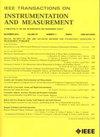Fusion Analysis of EEG-fNIRS Multimodal Brain Signals: A Multitask Classification Algorithm Incorporating Spatial-Temporal Convolution and Dual Attention Mechanisms
IF 5.6
2区 工程技术
Q1 ENGINEERING, ELECTRICAL & ELECTRONIC
IEEE Transactions on Instrumentation and Measurement
Pub Date : 2025-02-13
DOI:10.1109/TIM.2025.3538086
引用次数: 0
Abstract
Brain–computer interface (BCI) is an important way of human-computer interaction, with the ability to monitor brain states, and it has become an increasingly significant research direction. Single-modal noninvasive brain signals have limitations, such as low spatial resolution or low temporal resolution, while multimodal brain signal acquisition and processing can overcome these limitations. Electroencephalogram and functional near-infrared spectroscopy (EEG-fNIRS) is a method with advantages in multimodal brain signal processing, but current fusion methods mostly use manual feature extraction or channel selection, which may lead to the loss of important information during the feature extraction or channel selection process in real-time BCI systems. In order to solve this issue, this article proposes an innovative fusion analysis method for EEG-fNIRS multimodal brain signals, using a hybrid algorithm that combines convolutional neural network (CNN) and Attention mechanisms for signal classification. The method first preprocesses the EEG and fNIRS signals separately, then extracts features using spatial-temporal convolutional layers, and finally merges them to obtain the classification results through dual attention calculation. Our method is validated on two publicly available mixed EEG-fNIRS BCI datasets, including three types of experimental tasks that do not involve actual movement: motor imagery (MI), mental arithmetic, and word generation (WG). The accuracy rates for each task reached 92.2% for MI, 98.6% for mental arithmetic, and 95.2% for WG, respectively. These rates have surpassed all the current methods. This indicates that our proposed method achieves better classification performance in non-actual movement classification tasks under the premise of lightweight. The method proposed in this study can be applied to the field of rapid and efficient identification of brain signals.求助全文
约1分钟内获得全文
求助全文
来源期刊

IEEE Transactions on Instrumentation and Measurement
工程技术-工程:电子与电气
CiteScore
9.00
自引率
23.20%
发文量
1294
审稿时长
3.9 months
期刊介绍:
Papers are sought that address innovative solutions to the development and use of electrical and electronic instruments and equipment to measure, monitor and/or record physical phenomena for the purpose of advancing measurement science, methods, functionality and applications. The scope of these papers may encompass: (1) theory, methodology, and practice of measurement; (2) design, development and evaluation of instrumentation and measurement systems and components used in generating, acquiring, conditioning and processing signals; (3) analysis, representation, display, and preservation of the information obtained from a set of measurements; and (4) scientific and technical support to establishment and maintenance of technical standards in the field of Instrumentation and Measurement.
 求助内容:
求助内容: 应助结果提醒方式:
应助结果提醒方式:


